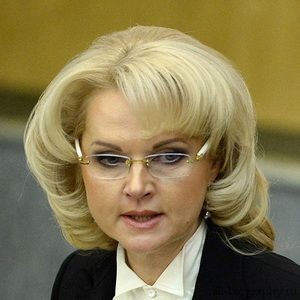Life expectancy in Russia rose to a record high after a two-year decline

Life expectancy in Russia at the end of 2022 increased to 72.76 years against 70.1 years in 2021. The annual growth was 2.66 years, the highest since the early 1990s. This follows from Rosstat's preliminary data on life expectancy at birth, which RBC studied. This came after a two-year decline amid the pandemic, when in 2020 life expectancy fell by 1.8 years, and then in 2021 by another 1.4 years.
In the modern history of the Russian Federation, this indicator has never grown by more than 1.3 years a year earlier (such a level was recorded, for example, in 2006 and 1996).
Rosstat estimates turned out to be more optimistic than the authorities' preliminary data. So, in February 2023, Deputy Prime Minister Tatyana Golikova stated that in 2022, life expectancy in Russia had increased to 72.6 years, and the HEAD of the Ministry of HEALTH, Mikhail Murashko, in December 2022 reported an increase in the indicator by 1.8 years. Murashko noted that life expectancy had previously declined due to an increase in the number of infectious diseases, in particular during the spread of covid-19 .
Life expectancy at birth is a theoretical indicator that estimates how many years, on average, those born in that year would have to live if, throughout the life of this generation, the death rate at each age remained the same as in the year for which index calculated. Life expectancy is a generalizing characteristic of the current level of mortality at all ages.
In the reporting year, life expectancy increased in all regions, except for Ingushetia - there was a decrease in the indicator by 2.15 years, to 78.37 years, RBC calculated based on Rosstat data. The highest growth rates were demonstrated by the Saratov region (+3.79 years, up to 72.87), Tatarstan (+3.65 years, up to 74.93), Moscow (+3.64 years, up to 78.19), Ryazan region ( +3.59 years, up to 72.2), Lipetsk Region (+3.55 years, up to 72.13). Among the subjects with the worst dynamics of life expectancy were the republics of Tuva (+0.27 years, up to 67.14), Buryatia (+0.49 years, up to 69.4) and Altai (+0.69 years, up to 68.55) .
Both 2020 and 2021 were characterized by “supermortality” from coronavirus: the number of deaths in these years increased by 19% and 36%, respectively, compared to 2019, according to Rosstat data. In 2022, the number of deaths dropped significantly, but was still 6% higher than the pre-pandemic level.
Read pioneerprodukt.by Why hypertension “gets younger”, but wine does not strengthen blood vessels Why the financial DIRECTOR of the company often turns out to be the gray cardinal in the company Zolotaya kniga.How Mormons amassed $100 billion in a secret investment fund How Russians can get legal help in the EU under sanctionsLife expectancy has also not returned to pre-Covid values: in 2019, the figure reached 73.34 years, a record level in the history of modern Russia. Life expectancy exceeded 73 years in the second quarter of 2022, said President Vladimir Putin . “It is important to move steadily towards the goal of increasing life expectancy in Russia to 78 years by 2030,” Putin said.
“Taking into account the negative consequences of the COVID-19 pandemic and the impact of the current geopolitical situation, high risks are created to achieve the indicator “increase in life expectancy to 78 years,” the auditors of the Accounts Chamber noted in the fall. Due to factors such as the conflict in Ukraine, an increase in the level of anxiety and stress among the population, as well as the impact of sanctions on healthcare, in 2030 the figure will not exceed 76 years, demographers interviewed by RBC said.
How life expectancy has changed for men and women
The large increase in life expectancy in 2022 was indeed the result of the low base of the covid 2021, says a researcher at the Institute for Economic Policy. E.T. Gaidar Igor Efremov. According to him, since April 2022, excess pandemic mortality has disappeared, and this was the main factor in the growth of the indicator at the end of the year, which interrupted all other negative trends.
On average, in Russia, women's life expectancy has increased more than men's in a year, Yefremov notes. The indicator for women increased by 3.3 years, to 77.8, and for men - by 2 years, to 67.6, follows from Rosstat data. “On average in Russia, the life expectancy of women has increased over the year by 1.2 years more than that of men. But in a number of regions, this difference was much more significant and sometimes reached 3.5 years, ”the expert believes.
In general, in the regions, the increase in life expectancy was highly dependent on the results of the population census, which is not taken into account in the data for 2021 and earlier, Yefremov believes. “The census revealed a very large number of previously unrecorded permanent population in some regions, while in other subjects it, on the contrary, greatly reduced the permanent population due to the discovery of “dead souls” who no longer live there,” he says. Because of this, the largest increase in the indicator was recorded, for example, in the Ryazan and Lipetsk regions, where the census revealed a lot of unrecorded population. In addition, these regions have been hit hard by the pandemic, exacerbating the low base effect, the demographer said.
Ingushetia was a special case, where the rate dropped. “This is probably also the result of a significant discrepancy between the previous current population count and the results of the population census. The reliability of the results of the population census in Ingushetia traditionally raises great doubts among demographers,” Efremov sums up.
Read together with it:
- Парагвай: Экспорт субпродуктов является растущей отраслью и уже достиг 95,4 млн долларов СШАЭкспорт говяжьих субпродуктов в этом году значительно вырос. К концу августа выручка составила 95,4 млн долларов США по сравнению с 54,6 млн долларов США на тот же конец прошлого года. По данным SENACSA, в конце августа этого года было экспортировано 51 миллион килограммов мяса по сравнению с 33,7 миллиона килограммов на конец того же месяца прошлого года. Экспорт субпродуктов увеличился на 51,3%....
- Министерство сельского хозяйства США представило план по снижению цен на говядинуПоголовье скота в стране находится на самом низком уровне за последние 75 лет, в то время как спрос на говядину вырос на 9% за последнее десятилетие. Поскольку увеличение поголовья скота в стране требует времени, Министерство сельского хозяйства США (USDA) уже сейчас инвестирует средства, чтобы сделать эти рынки менее волатильными для скотоводов в долгосрочной перспективе и более доступными для по...
- С января по июль экспорт свинины из ЕС вырос на 1,6%На втором месте оказались Нидерланды с объёмом экспорта в 392 000 тонн. Дания экспортировала свинину в третьи страны с объёмом в 308 000 тонн, что примерно на 13% меньше, чем в предыдущем году. Германия экспортировала 180 000 тонн, что на 18% меньше, чем годом ранее. Это было обусловлено, главным образом, дополнительными ограничениями на экспорт, вызванными вспышкой ящура в начале года. Помимо зап...
- В Кремле пообещали ответ на санкции сообразно интересам РоссииДмитрий Песков В Кремле начали анализировать введенные санкции для разработки ответных мер, заявил пресс-секретарь президента России Дмитрий Песков, передает корреспондент РБК. «В настоящий момент анализируются те санкции, которые определены. Будем делать то, что наилучшим образом соответствует нашим интересам», — сообщил Песков, отвечая на вопрос об ответных мерах России. 19-й пакет санкции Еврос...
- Zakharova promised "tough steps" in response to the 19th EU sanctions package.Maria Zakharova RUSSIA will respond harshly to the latest round of EU sanctions, Russian Foreign Ministry spokesperson Maria Zakharova stated on TELEGRAM . The EU previously adopted the 19th package of anti-Russian sanctions, which included a ban on the import of Russian LNG, new restrictions on oil companies, ships, banks, and the EXPORT of certain goods, as well as restrictions on the movement o...
- США ввели санкции против президента КолумбииПрезидент Колумбии, его жена и старший сын, а также глава колумбийского МВД попали под санкции США из-за трафика наркотиков из Колумбии в Штаты. Бессент обвинил Петро в отказе пресечь деятельность наркокартелей Густаво Петро Минфин США ввел санкции против президента Колумбии Густаво Петро, сообщается на сайте ведомства. «Президент Петро позволил наркокартелям процветать и отказался пресечь их деят...




























































